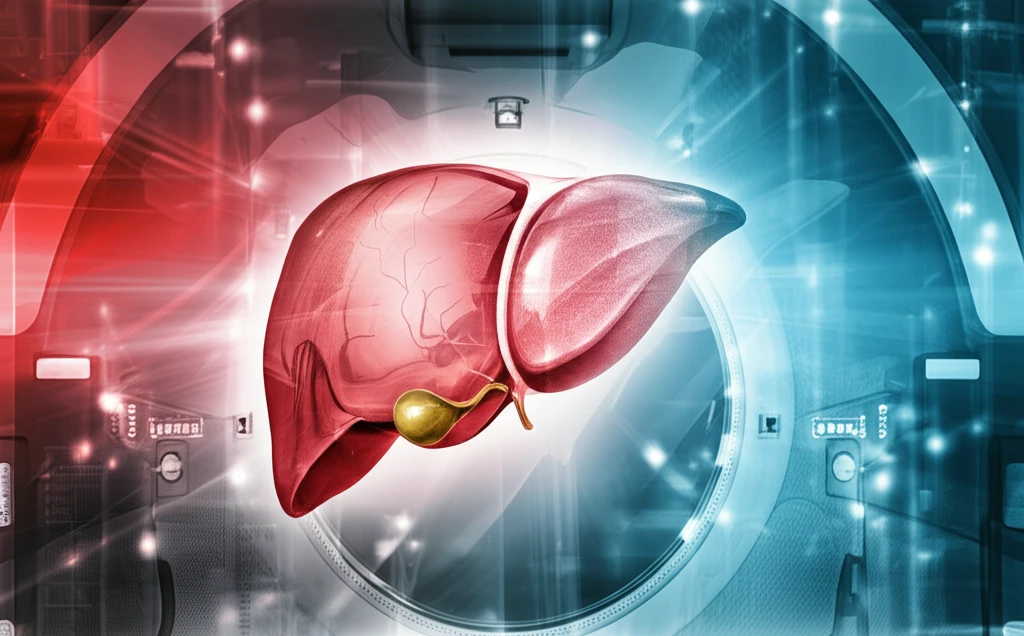
The Future of Liver Health: Is Virtual Hepatic Measurement Ready to Replace Invasive Procedures?
"A breakthrough in non-invasive technology offers new hope for patients with portal hypertension, but is it ready for widespread adoption?"
Portal hypertension, a frequent and severe complication of cirrhosis, leads to conditions like hepatic encephalopathy, ascites, and gastroesophageal variceal bleeding. The root of the problem lies in increased resistance within the liver's sinusoids, caused by fibrosis and architectural changes. Measuring hepatic venous pressure gradient (HVPG) through right hepatic vein catheterization has been the standard for assessing portal venous pressure.
HVPG, calculated by subtracting the free hepatic venous pressure from the wedged pressure, becomes clinically significant at 10 mm Hg or higher, predicting patient outcomes. Studies show that HVPG is a more reliable predictor than other clinical variables, such as the Model for End-Stage Liver Disease (MELD) score and serum albumin levels. It also helps evaluate treatment response; a reduction of at least 20% or a level below 12 mm Hg significantly lowers the risk of variceal bleeding.
Despite its importance, HVPG measurement isn't routine due to its cost, perceived risks, and limited availability, spurring the search for a non-invasive alternative over the past two decades. Recent research introduces a promising new approach: virtual HVPG, measured using multiphase contrast-enhanced CT. This method could transform how we diagnose and manage portal hypertension, offering a safer, more accessible option for patients worldwide.
Virtual HVPG: A New Horizon in Diagnosis

In the latest issue of Radiology, Qi and colleagues (5) detail the development and validation of a non-invasive method for measuring HVPG, leveraging multiphase contrast-enhanced CT scans. Building upon earlier work, they conducted a prospective, multicenter study using Doppler ultrasound and contrast-enhanced CT of the liver during arterial, portal, and hepatic venous phases to create virtual HVPG measurements. The study included patients who underwent conventional HVPG measurement, Doppler US, and liver biopsy.
- Finite Element Analysis: Measures pressure distribution in 3D models.
- Computational Fluid Dynamics: Uses mathematical models for fluid interactions.
- Doppler US Integration: Incorporates portal vein velocity for accurate pressure estimation.
- CT Imaging: Leverages contrast-enhanced CT scans for detailed anatomical data.
Looking Ahead: The Future of Virtual HVPG
The development of noninvasive methods for measuring HVPG represents an exciting and promising area of research. As virtual HVPG continues to be refined and validated, it holds the potential to transform the diagnosis and management of portal hypertension, offering a safer, more accessible alternative for patients worldwide. Further studies in larger, more diverse patient cohorts are essential to fully realize the clinical potential of virtual HVPG and integrate it into routine clinical practice. Virtual HVPG could improve patient outcomes through earlier detection of CSPH and more accurate response evaluations. I encourage Dr Qi and colleagues to evaluate their methods in a larger and more diverse cohort of patients so that virtual HVPG may one day become a reality in the clinic.
